DIG Scope
Decentralized Information
- Decentralized - no central node, no hierarchy
- Patchwork - join at edges - changes systems
- Fractal structure of effective large scale systems
- Technical and social
Technical Scope
- Web as decentralized phenomenon
- Fixing it where it isn't (DNS,...)
- Post-web research - eg Google, etc for SW
- User interfaces to Sem Web
- Working large-scale ontology & data joining
- Policy Aware systems
- Trust: Now becoming the major impediment to computer use
- Also scope to decentralized communication protocols
- HTTP3 = bit torrent/trackerless? DHT?
Social
- Culture and community boundaries
- Tools for joining cultures
- Privacy, Accountability, Transparency: Policy
- Economics for resource management
Mobile and pervasive computing
- From device to communication to content: User is in content world
- Content world includes all kinds of user-relevant data
- To cater to user, device must absorb context
- When devices are everywhere, the semantic web layer is what the is
important to the user
Policy Aware Web -- Proof Carrying Authentication
 |
Departure from traditional approach to security, privacy, ownership
- Enable flexible, decentralized approach to policy
management
- Local control (vs. global authorities)Rule-based permissions
(vs. token-based access control)
- Evaluate policies with reference to:
- User preferences
- Web data
- Operating Context
|
Transparent Accountable Data Mining
 |
Goal: Assess applicability of usage limitation
model to data mining/profiling applications.
Explore technical challenges of provable accountability in large
scale, heterogeneous information systems (the Web).
Develop public policy models to enable transparency and
accountable in data mining applications
|
Summary
- Pervasive computing is not programmable without semantic web
- Multimodal systems share semantics across modes
- Policy aware systems will be the norm
- New challenges when we get there we can't yet imagine
Web Science
Building and understanding beneficial weblike things
http://www.w3.org/2006/Talks/0314-ox-tbl/
Tim Berners-Lee
MIT Computer Science & Artificial Intelligence Laboratory (CSAIL)
Southampton University School of Electronics and Computer Science (ECS)
This talk
- Philosophical engineering
- The Web
- The Semantic Web
- The future
Philiosophical Engineering
- cf. Experimental Philosophy
- Microscoopic rules
- Macroscopic behaviour
- Connection between them
- Synthesis vs Analysis
- Rules are social as well as technical
Web rules
Technical:
- Use URIs for documents and anchors
- Ladder of authority to interpret
- Use standards (HTTP. xHTML, SVG, CSS, DOM, XSLT, ...)
Social:
- Serve useful stuff
- Make useful links
- Intellectual property, libel & fraud laws
Semantic Web
Technical:
- Use URIs for documents and concepts
- Same ladder of authority
- Standards: (RDF, OWL, SPARQL*, RIF**)
Social:
- Serve useful stuff
- Make useful links
- Share ontologies
- Agree on ontologies
SW: Everything has a URI
Don't say "colour" say
<http://example.com/2002/std6#col>
The relational database
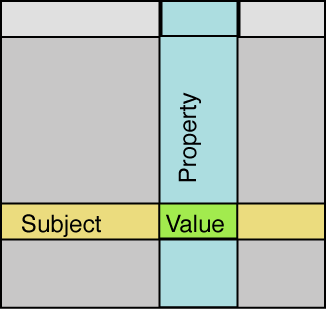
The element of the Semantic Web

- Can be encoded in XML
- Simplicity and mathematical consistency
- This is called Resource Description Framework (RDF)
Semantic web includes tables,...
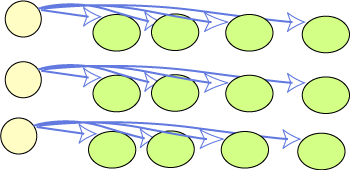
...trees

... everything
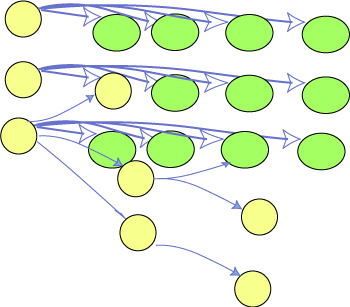
RDF data...
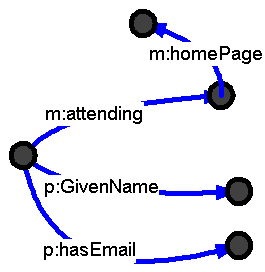
...merges just like that.
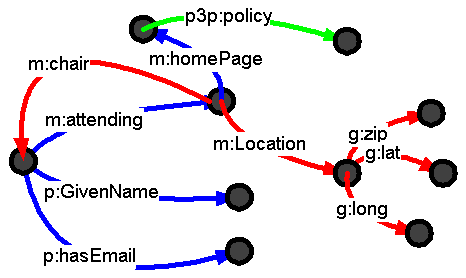
Subject and object node using same URIs
Fractal Web of concepts
- Across boundaries of scale -- personal, group, global
- Varying access levels
- Tension between local and global standards
- Society is a fractal tangle, so must SW be.
- Personal interactions on multiple scales
The semantic web is about allowing data systems to change by evolution
not revolution
Total Cost of Ontologies (TCO)
Assume :-) ontologies evenly spread across orders of magnitude;
committe size as log(community), time as comitee^2,
cost shared across community.
| Scale |
Eg |
Committe size |
Cost per ontology (weeks) |
My share of cost |
| 0 |
Me |
1 |
1 |
1 |
| 10 |
My team |
4 |
16 |
1.6 |
| 100 |
Group |
7 |
49 |
0.49 |
| 1000 |
|
10 |
100 |
0.10 |
| 10k |
Enterprise |
13 |
169 |
0.017 |
| 100k |
Business area |
16 |
256 |
0.0026 |
| 1M |
|
19 |
361 |
0.00036 |
| 10M |
|
22 |
484 |
0.000048 |
| 100M |
National, State |
25 |
625 |
0.000006 |
| 1G |
EU, US |
28 |
784 |
0.000001 |
| 10G |
Planet |
31 |
961 |
0.000000 |
Total cost of 10 ontologies: 3.2 weeks. Serious project: 30 ontologies,
TCO = 10 weeks.
Lesson:
Do your bit.
Others will do theirs.
Thank those who do working groups!
Clients of the RDF bus
New data applications can be built on top of RDF bus, for
example:
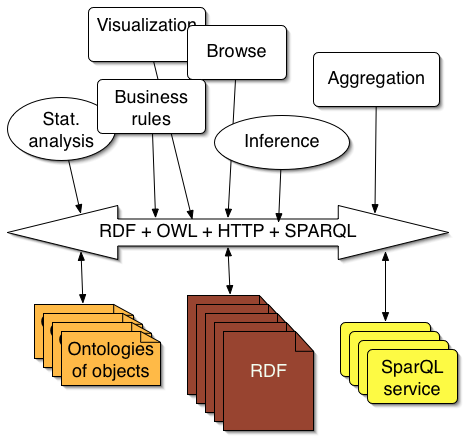
Adapting SQL Databases
Keep your existing systems running - adapt them
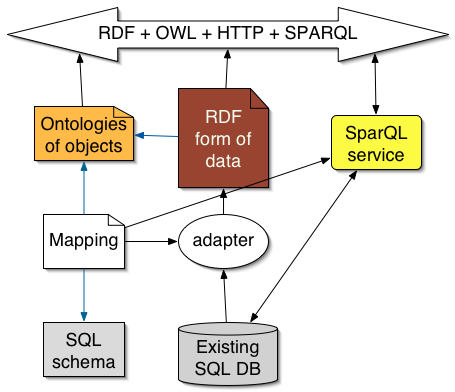
Adapting XML
Remember- RDF on an HTTP server can always be virtual
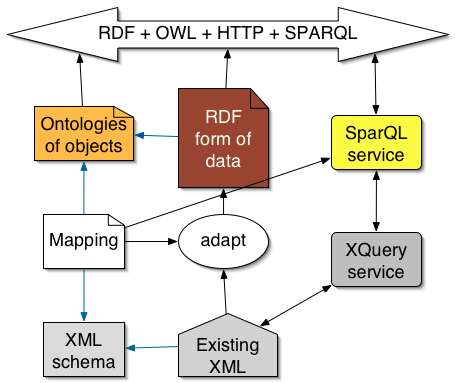
Future: Stack of expressive power
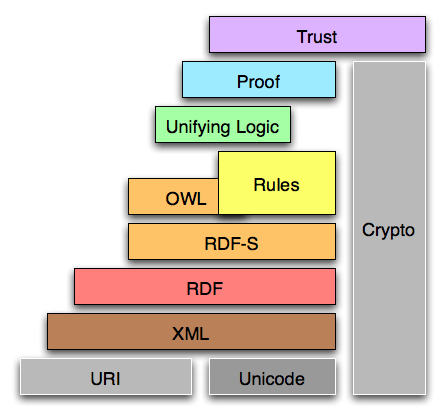
The Semantic Web Wave
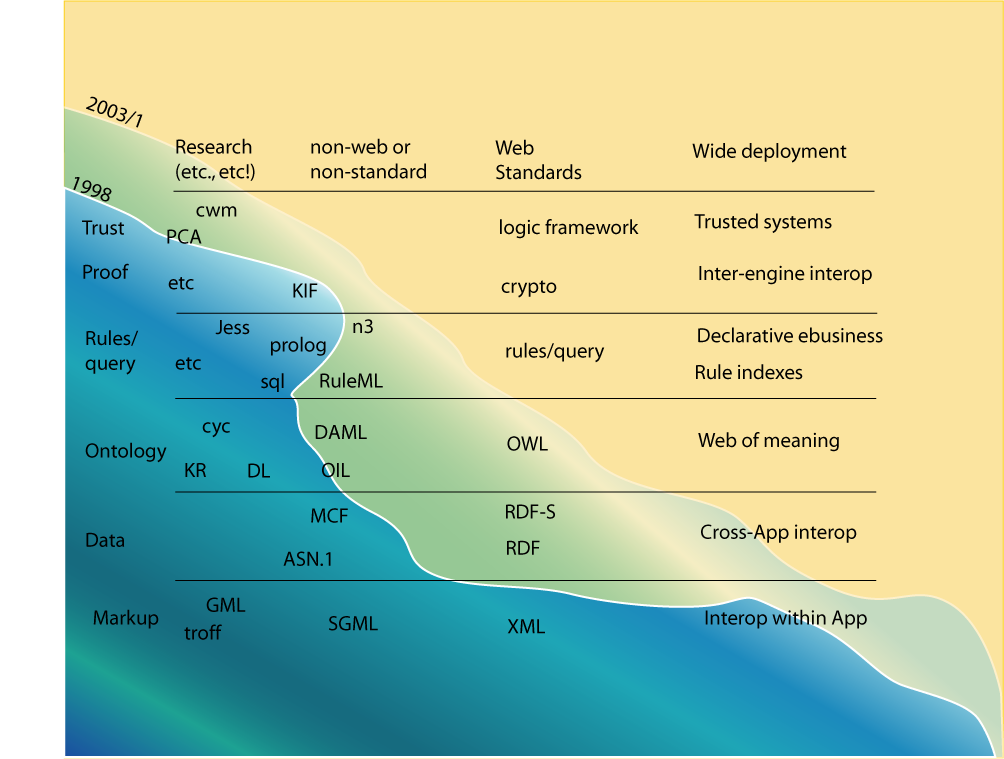
Why not instant?
- Paradigm shift all over again
- Data is trickier, esp. to design logic languages
- Need for smaller incubator like HEP
- Data is less exciting with no browser
- Fear of having to make ontologies
Good news
- Logic discussions are getting done (OW, SPARQL, RIF,...)
- Life sciences is an incubator community
- TCO is finite
- Startups
- Major vendors are moving it into products
- We have some ideas about actually making a user interface!
When you get home
- Make a FOAF page + give yourself a URI
- Take your own data
- Export as RDF (or SPARQL)
- Include links to related other data
- Tabulate it
Future of Sem Web
- Much more data integration power
- much more policy awareness required
- systems with tarnsparentcy ("Why? How do you know that?")
- Computer analysis of data much more powerful
- work needed on emnergent properties, stability, and
- in general relationship of µrules to Mphenomena<.li>
- New dreams, new systems, new rules
- New field: Web Science















